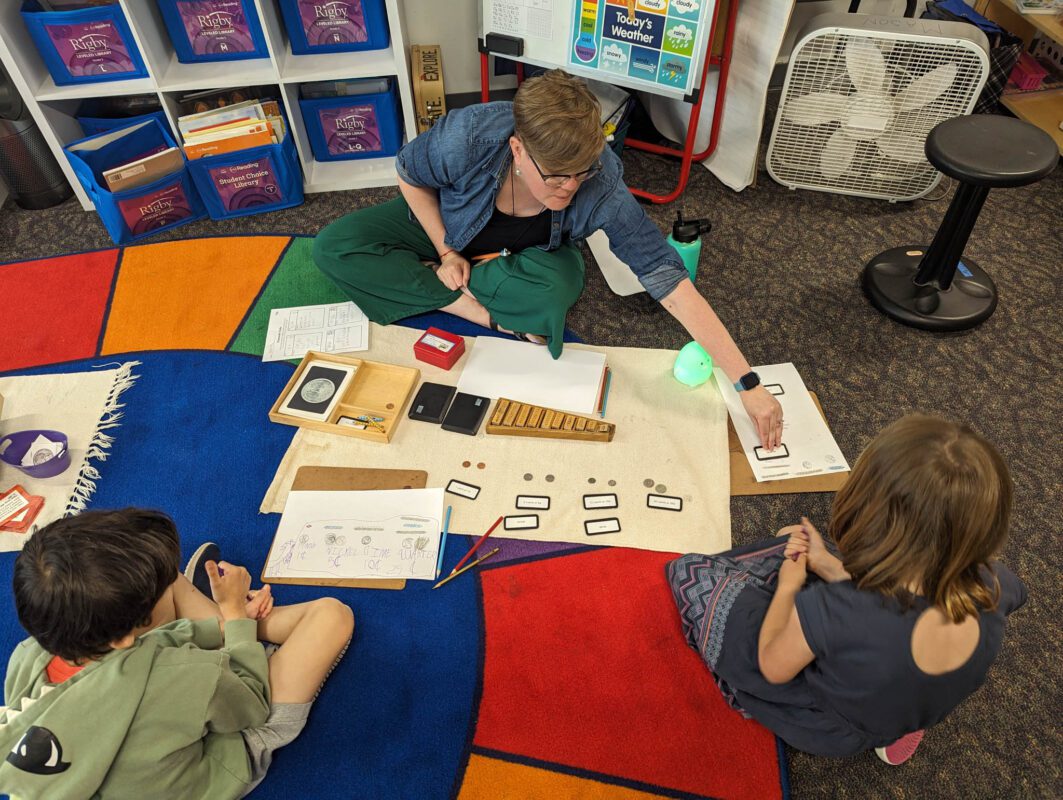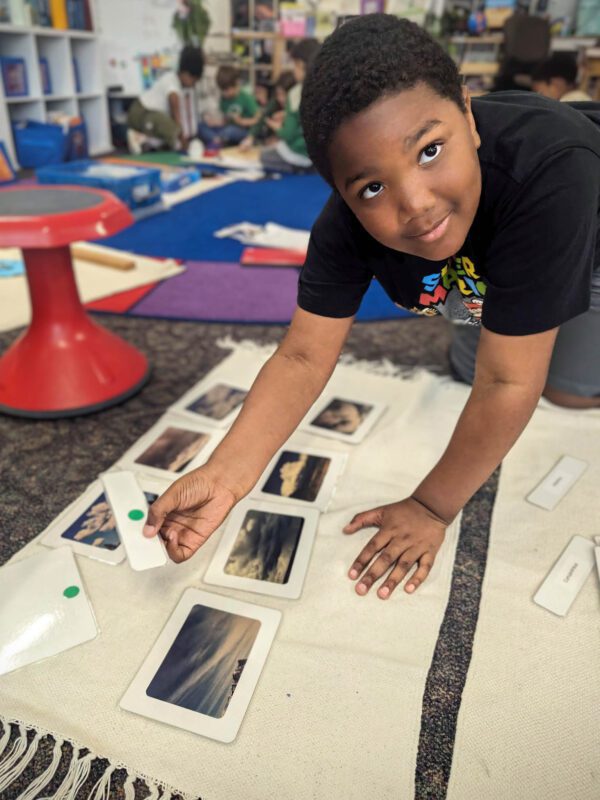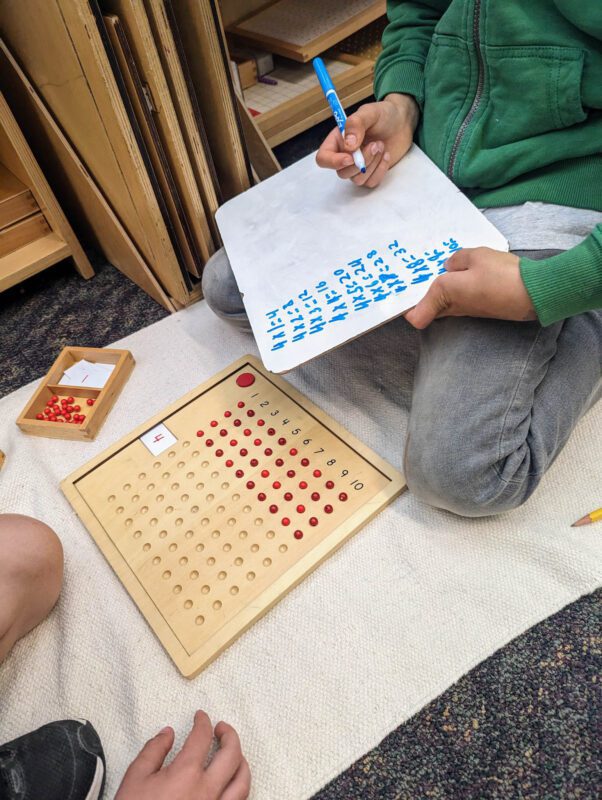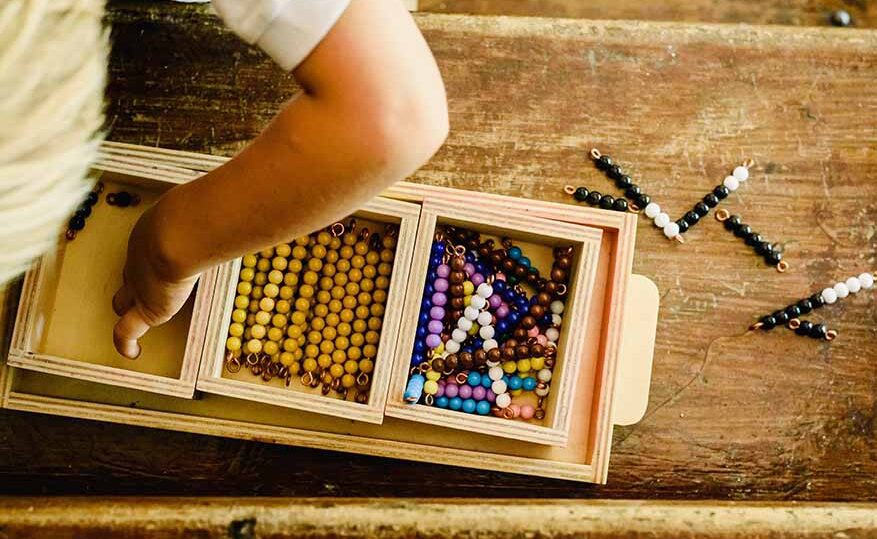Our Alumni Spotlight series highlights the contributions of Kenan Fellows, showcasing their significant roles in schools, districts and communities.
This month, we feature Joy Mason, an educator of 12 years who has won numerous recognitions including Durham Public Schools Teacher of the Month, George Watts Montessori Teacher of the Year, and a Montessori Action Society Research Symposium contributor.
Fellowship Year: 2023-24
Current Job/Organization: Lower Elementary Teacher grades 1-3 at George Watts Montessori with Durham Public Schools
How has the fellowship changed your approach to teaching?
Before my fellowship, I had ideas for lessons and projects for my students, but making them happen could be a struggle. I didn’t know how to connect with resources or find support for my ideas.
I also kept my ideas to myself and tried to use them to support my students in my classroom. Throughout my fellowship year, I was connected with amazing educators who were excited to hear my ideas and invested their time to support their development. I realized other educators might be interested in what I had to say.
This coming year I am presenting at district PD (professional development) and will also be presenting at a state Montessori conference. The fellowship helped me find my voice as a leader and continue my passion for working with students.



How do you incorporate collaborative learning strategies into your classroom, and what impact have you observed on student engagement and understanding?
My classroom is a multi-age classroom with first through third graders. These students work to support each other and learn collaboratively throughout the day. Lessons and learning in our classroom are not isolated by subject area. Math can involve art, reading takes place across all subject areas, and learning is not restricted to a classroom. As a Montessori educator, I’m a guide and a facilitator.
I support students by creating an environment where children can grow into confident, self-motivated learners.
How do you foster a sense of curiosity and inquiry among your students? Are there specific activities or strategies you find particularly effective?
Montessori teachers are often referred to as guides. We support students in their exploration and understanding of the world around them. To do this successfully you need to step back and observe the interests and needs of the children. I spend a lot of time cultivating a classroom community where students feel safe to explore, learn, and possibly fail.
Learning happens when children fail but feel safe and supported enough to try again. Our classroom environment is organized in a way that sparks students’ curiosity and encourages exploration. Student motivation to learn becomes intrinsic because the teacher sees each child as an individual and supports their needs.
How do you help students understand how their schoolwork will someday apply to their futures?
Our learning is never in isolation. Standards and skills are interconnected and the “why” is always explained. We use metal insets to strengthen our hands for handwriting. We hold our pencils this way so our hands don’t get tired and we can write more. We learn how to skip counting with bead chains because that will help us learn our multiplication facts. It’s important to learn odd and even numbers to know if we will all have a buddy to walk with for our field trip. Students are never afraid to ask why because they know there will be a why.
How has the Kenan fellowship impacted your career?
As a result of my fellowship, I’m willing to take risks and speak up. I realize that people do care what I have to say and as a result, I have submitted proposals to speak at several different venues. In addition, I am supporting and planning the state’s Montessori conference this year and advocating for welcoming practices and presentations for public Montessori schools.

